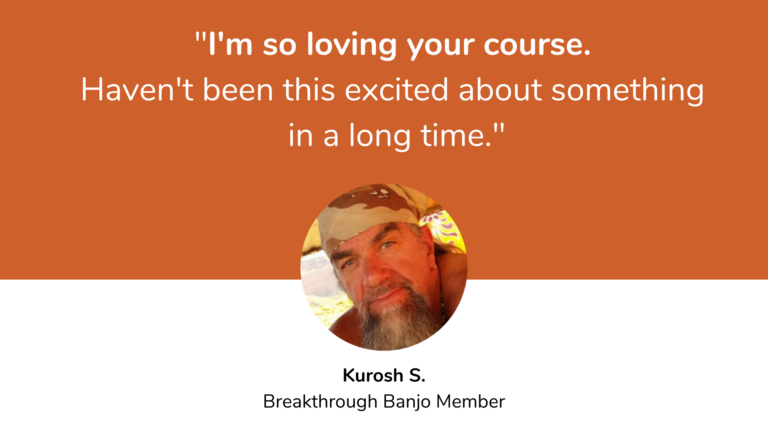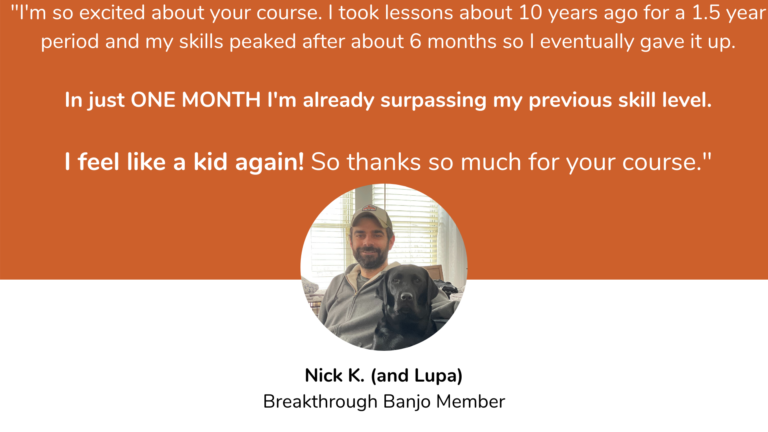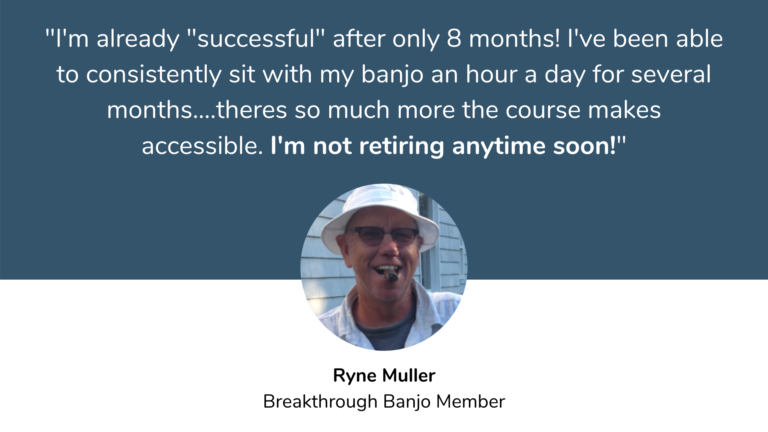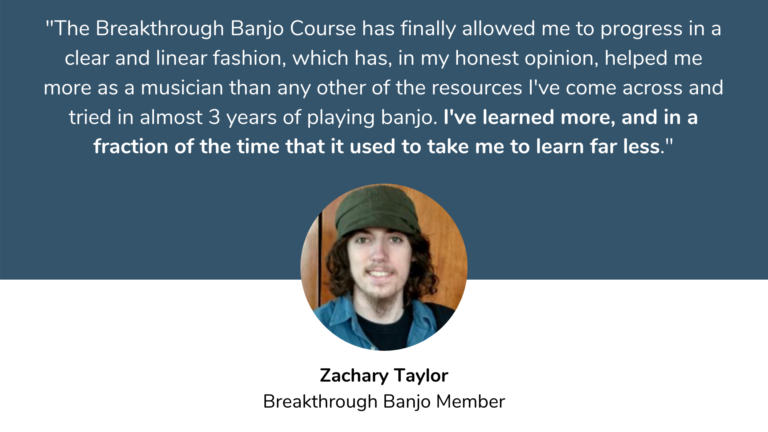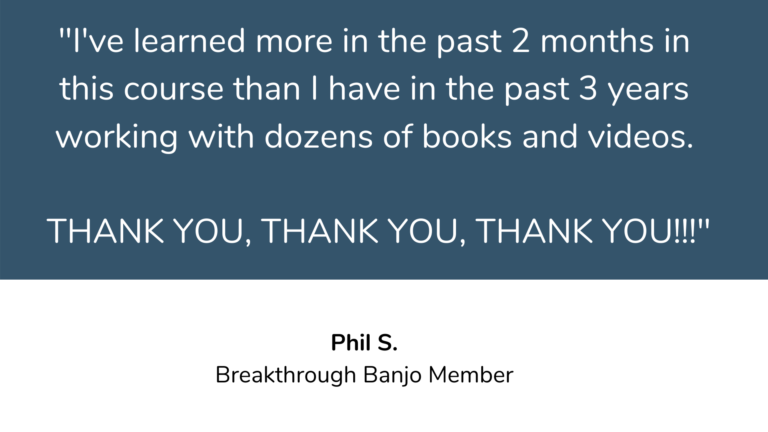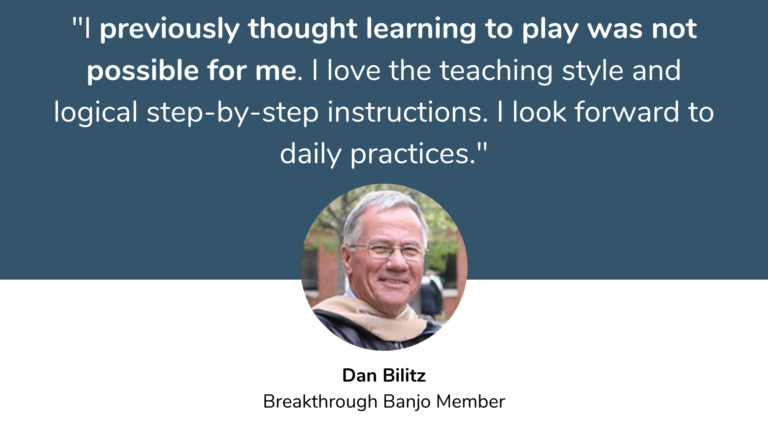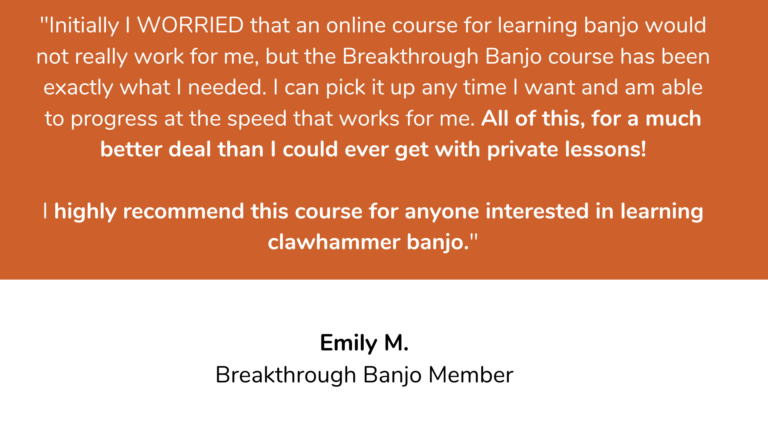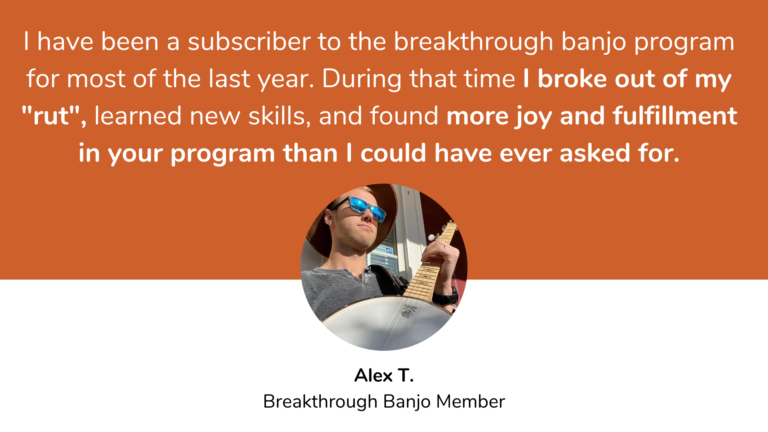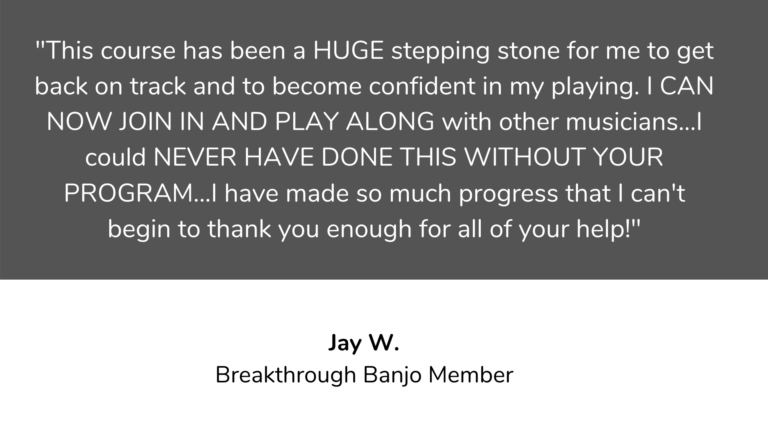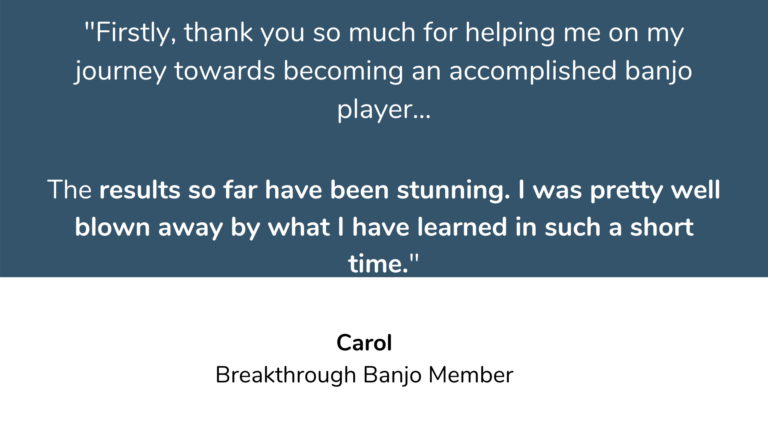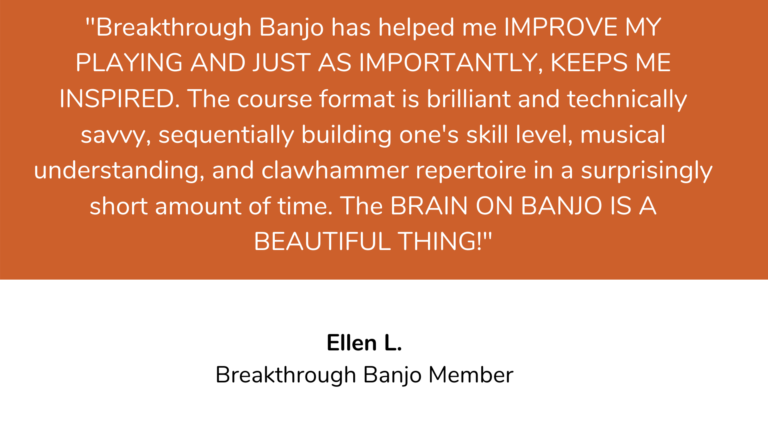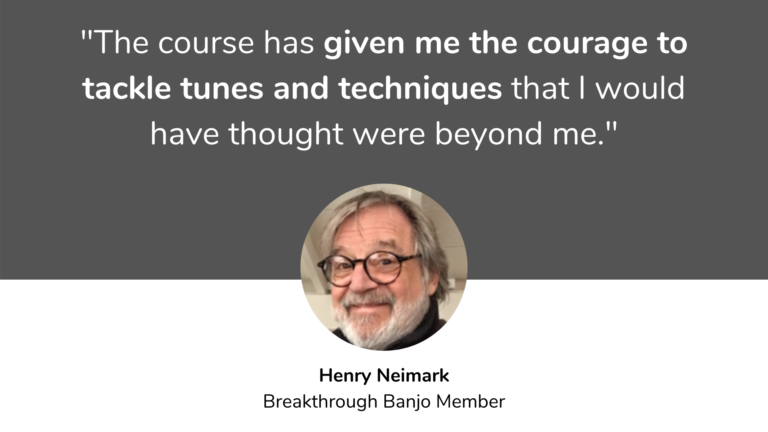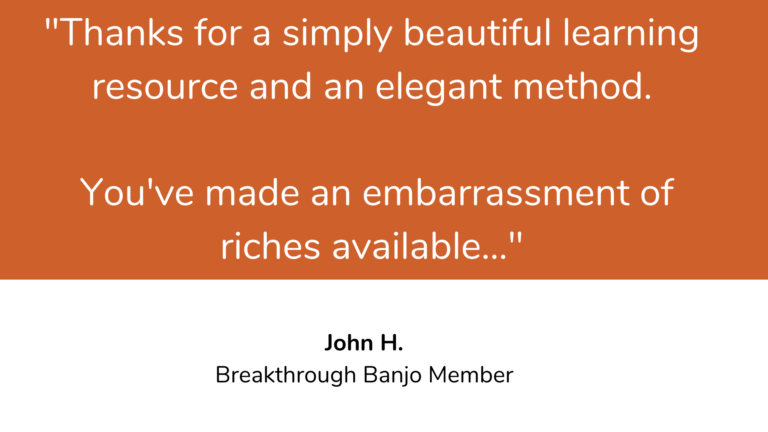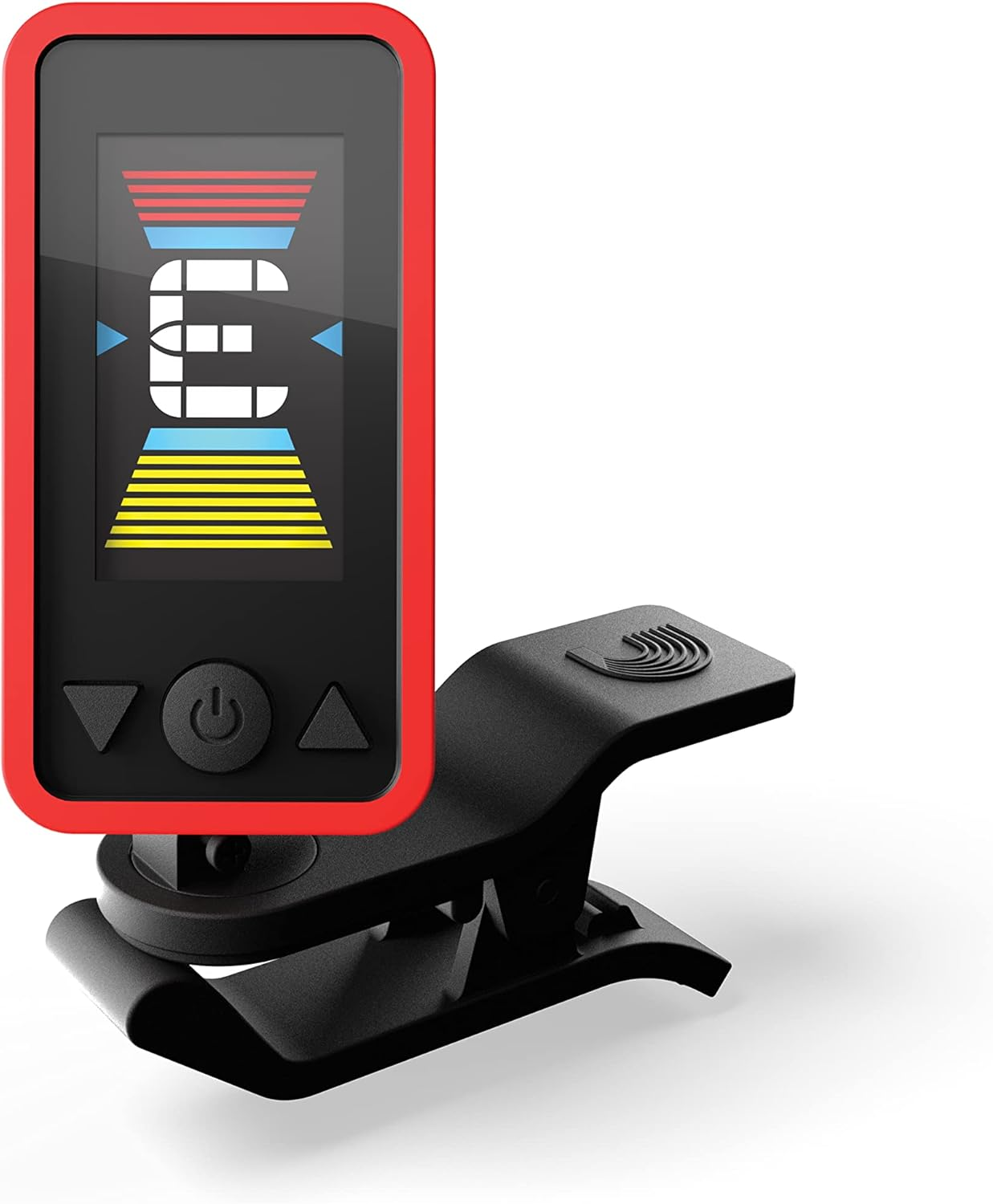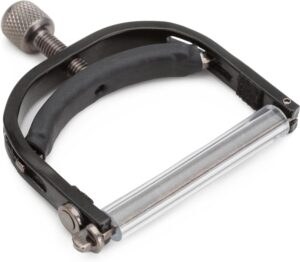Are you interested in learning clawhammer banjo but have questions?
Let’s talk about everything you need before you get started on your journey to plunktown!
Click below to download the guide to getting started, which includes links to all of the gear mentioned in the video.
Let’s start with the most important question of all…what type of banjo should you get?
First, it should be a 5-string banjo. A 5-string banjo has 4 long strings and one shorter “drone” string. This is unlike tenor and plectrum banjos which typically have 4 strings and no drone string. For clawhammer banjo, you need the drone string.
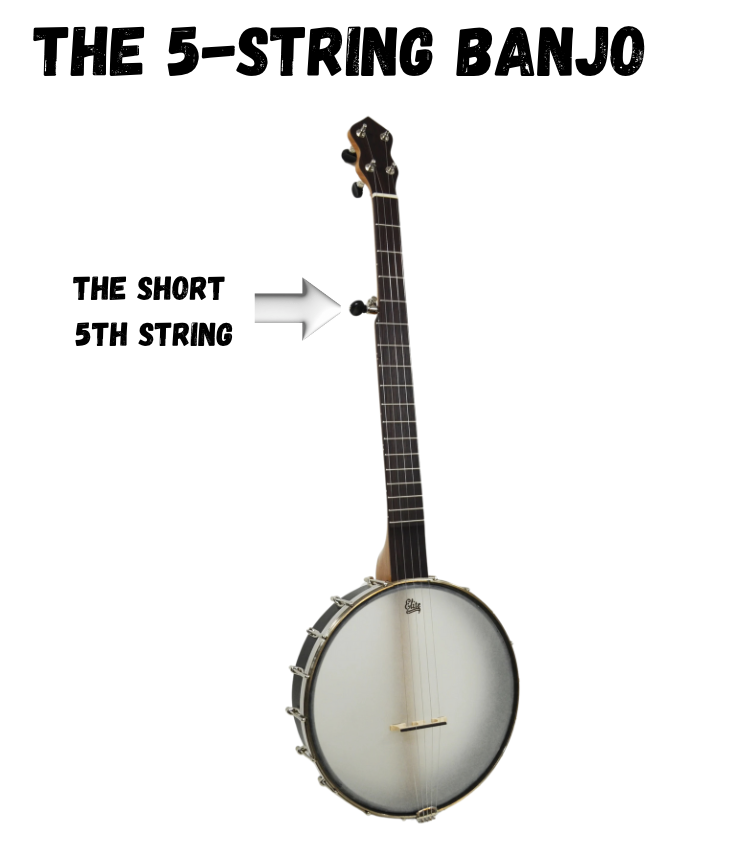
5-string banjos come in two main types: open back and resonator.
Resonator banjos have a resonator shell behind the banjo head, which helps project the sound forward. Many people tend to associated open back banjos with clawhammer style, and resonator banjos with 3 finger bluegrass.
That being said, you can absolutely play clawhammer banjo on a resonator banjo, and some of the most influential clawhammer banjoists of all time used them. They are a good bit heavier, however. So, if weight is a consideration, then an open back may be the way to go.
What banjo should you get, you ask???
That noise you just heard, my friend, is the sound of a giant can of worms opening.
As you might imagine, this is a topic filled will many diverse opinions. That’s because there are many valid options, and so there’s no “right” answer.
What follows is my own opinion, forged by a couple of decades of experience with the banjo and working with thousands of beginning students.
Before I go any further, if you remember nothing else, the most important feature of any banjo you get is that it has been set up well so that it plays easily.
This is why, for a beginner, it’s a great idea to buy your banjo from someone who knows banjos, and who has ensured that it has been set up properly (whether you’re buying it in person or, more likely, online).
This is because even the most inexpensive, entry-level banjo that’s been set up well will sound much better and be easier to play than the most expensive, top-of-the line banjo that has not.
So, with that said, here’s a bit more guidance on buying your first banjo.
Recommended Starter Banjos (under $500)
In general, there are two main things that make for a quality banjo:
- Quality materials. The quality of the wood and the quality of the hardware will impact the sound, playability, and durability of the banjo.
- Quality craftsmanship. The better the each individual component is made and the better they all fit together, the better the banjo will play and sound.
The banjos in this category will be factory-made, which helps to keep costs down, and won’t use the highest quality materials. But there are some perfectly good options here if you’re wanting to save some pennies on your first banjo purchase.
Also, as a beginner, it’s unlikely you’ll be able to tell or care about the difference in sound between a banjo in this price range and one many times more expensive. Your ear will learn to discern those differences over time. What’s most important about the banjo at this stage is that it’s not hard to play because of poor construction or a poor setup.
There are two banjos in this category that are well constructed and are a great option as a starter banjo if properly set up are. They are the:
- The Recording King “Dirty 30s” open-back.
- The Gold Tone AC-1 open-back.
Recommended Starter Banjos ($500-ish range)
If you’re able to spend a bit more, there are a couple of other options that will provide a modest sonic and cosmetic upgrade from the first two options. They are the:
- Gold Tone “Cripple Creek” CC-50 and CC-100 (based on the descriptions, I can’t tell any clear differences in these models other than cosmetics).
- Deering Goodtime.
I personally started out on a Deering Goodtime banjo. They are very well made, very easy to play, and sound great.
Recommended Non-Starter Banjos ($1500 and up)
Once you hit the $1500 range, you start getting into banjos with highest quality materials and craftsmanship. This includes instruments made by single builders, which in my opinion are the best options at this price point.
Traditionally, instruments in this category will hold or increase in value over the years. And unlike other investment vehicles, they make a pleasing twang when struck.
There a great many options, but some of the current makers include:
- Cedar Mountain
- Pisgah
- Kevin Enoch
- Rickard
- Carolina Banjo Company
- Chuck Lee
- Dogwood
When buying online, ideally you want to do so from a place that knows banjos, so that you can ensure that it’s been “set up” by someone who understands banjos.
Some options here are:
- Elderly Instruments – new and used banjos.
- Banjo.com – new and used banjos.
- Gold Tone – for new Gold Tone banjos.
- The Banjo Hangout Classifieds – for used banjos from private sellers.
The following accessory is essential:
- A tuner. While there are many tuner apps for your smartphone, I recommend a clip-on tuner. These work by sensing the vibrations on the instrument, and as such allow you to tune your instrument in a noisy environment.
The following accessories are optional but highly recommended:
- A capo. Capos allow you to easily change keys, and are commonly used by most players.
- Extra strings. I personally prefer the light gauge strings from D’Addario.
- A hex wrench. These are used to adjust the hooks around the head of the banjo, so that you can change the tension of the banjo head. One of these may have come with your banjo – if not, you can purchase one that’s the right size for your banjo.
- A strap. Straps are a must in order to play the banjo standing up. You can definitely play a banjo sitting down without a strap, but using one can help ensure your banjo is in the optimal playing position.
- A stand. I strongly recommend keeping your banjo out, as doing so will almost always lead to you playing it more often.
As mentioned, I recommend using a tuner that clips onto the banjo. Tuners are not specific to a particular instrument – in other words, the same tuner can be used to tune a banjo, guitar, mandolin, etc.
The tuner that I currently prefer is the Eclipse tuner by D’Addario
The two decisions to make when buying strings are the material and the size.
For materials, strings are typically made from either steel or nylon (which are made to provide a sound similar to gut strings). Steel strings provide a brighter, sharper, sound which much more sustain, and are the more commonly used option. Gut strings offer a “plunkier,” warmer sound with much less sustain.
For size, the options vary from light to heavy gauge strings (for steel strings). Most banjo players use light or medium gauge strings.
I recommend players start out using light gauge steel strings. They’ll provide a great sound, and will be the most playable.
My personal preference are the D’Addario EJ69 Phosphor Bronze Lights.
For synthetic strings, my personal favorite are the Aquila “Nylguts”.
Having used just about every banjo capo on the market, my current favorite is the Paige capo.
It’s designed so that you can keep it on the banjo when not in use (just behind the nut). Capos have a terrible habit of vanishing, and so this design greatly reduces the chances of that happening.
I’ve tried just about every possible instrument stand design there is. This one is hands down my favorite.
Nope!
It is true that clawhammer banjo technique involves striking the string with the back of the nail of either the index or middle finger.
However, this does not require a long nail. It will make a clearer sound if your nail extends slightly past the flesh of your finger, but it needn’t be any longer.
While most players prefer to use the natural nail for the sound it gives, you can also use a pick for clawhammer banjo (I personally keep one around in case a nail breaks during a gig, or a I need extra volume).
As mentioned, most players prefer to use their natural nail, as do I.
However, if you have issues keeping any nail at all, or if they’re too soft to generated a good sound, then using a pick is a great option. I personally keep a pick as a backup in case a nail breaks during a gig (or I need extra volume).
My two favorite picks are:
Absolutely not! Like other folk traditions, clawhammer banjo players rely mainly on their ears and not their ears when making music.
This is unlike classical music, where printed sheet music tells the musician exactly what to play.
There is a form of written notation, known as tablature, that is used as a learning aid (click here for an article and video on how to read banjo tab).
The vast majority of musicians in the course of human history have and still do use their imagination and their ears to guide their music making, rather than the printed page. Anyone can learn to do this, and it is a much more natural way to make music.
When it comes to practice, it’s far more important that you’re able to practice consistently rather than for long periods of time.
If you’re able to practice for at least 30 minutes 3 to 4 times per week, then you’ll make steady, consistent progress
Ultimately, the quality of your practice matters more than the quantity!
Click here to check out the Breakthrough Banjo course for clawhammer banjo.
It’s the course that thousands of adult beginners have used to learn to play, many of whom had no prior musical experience.
